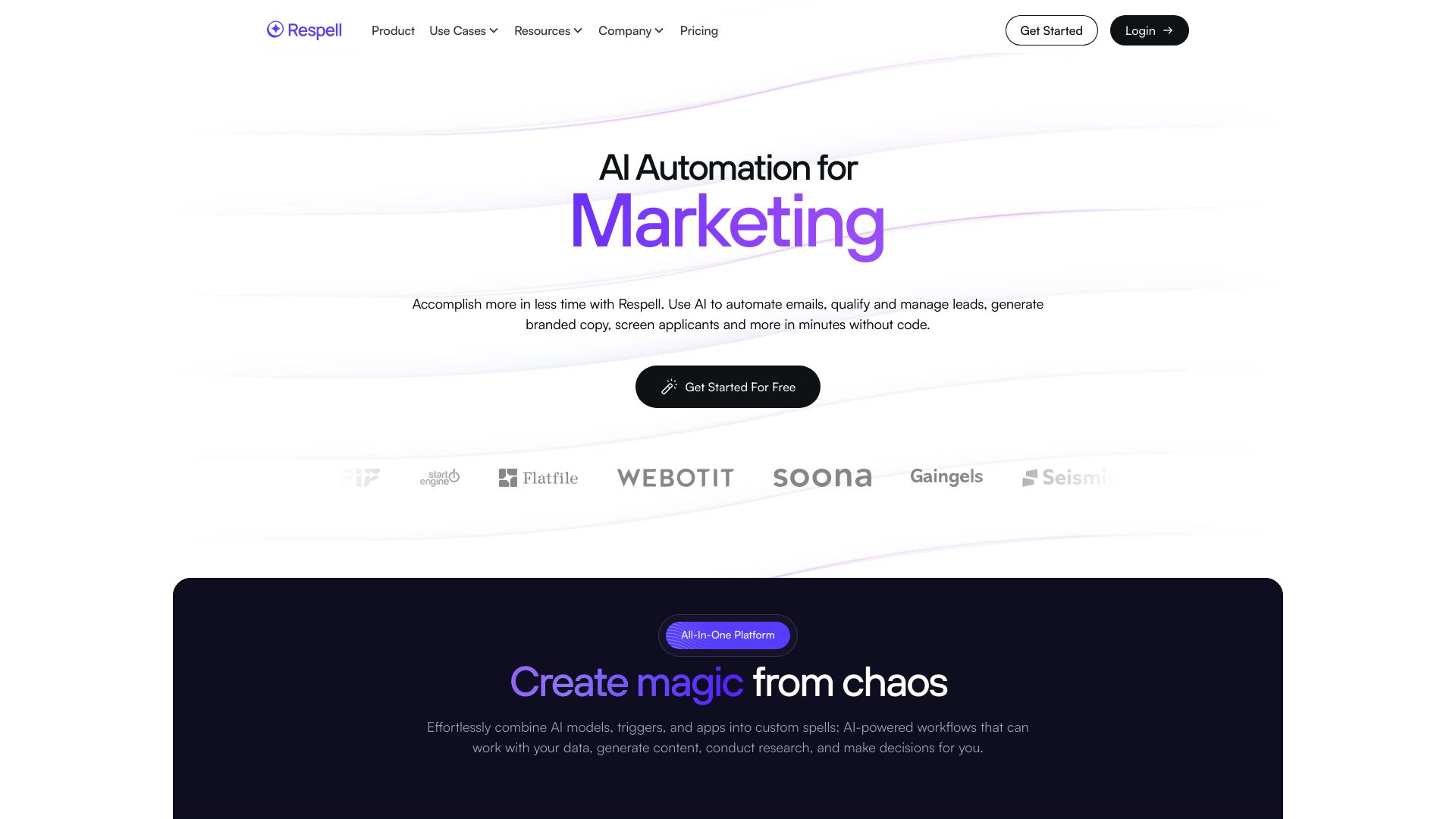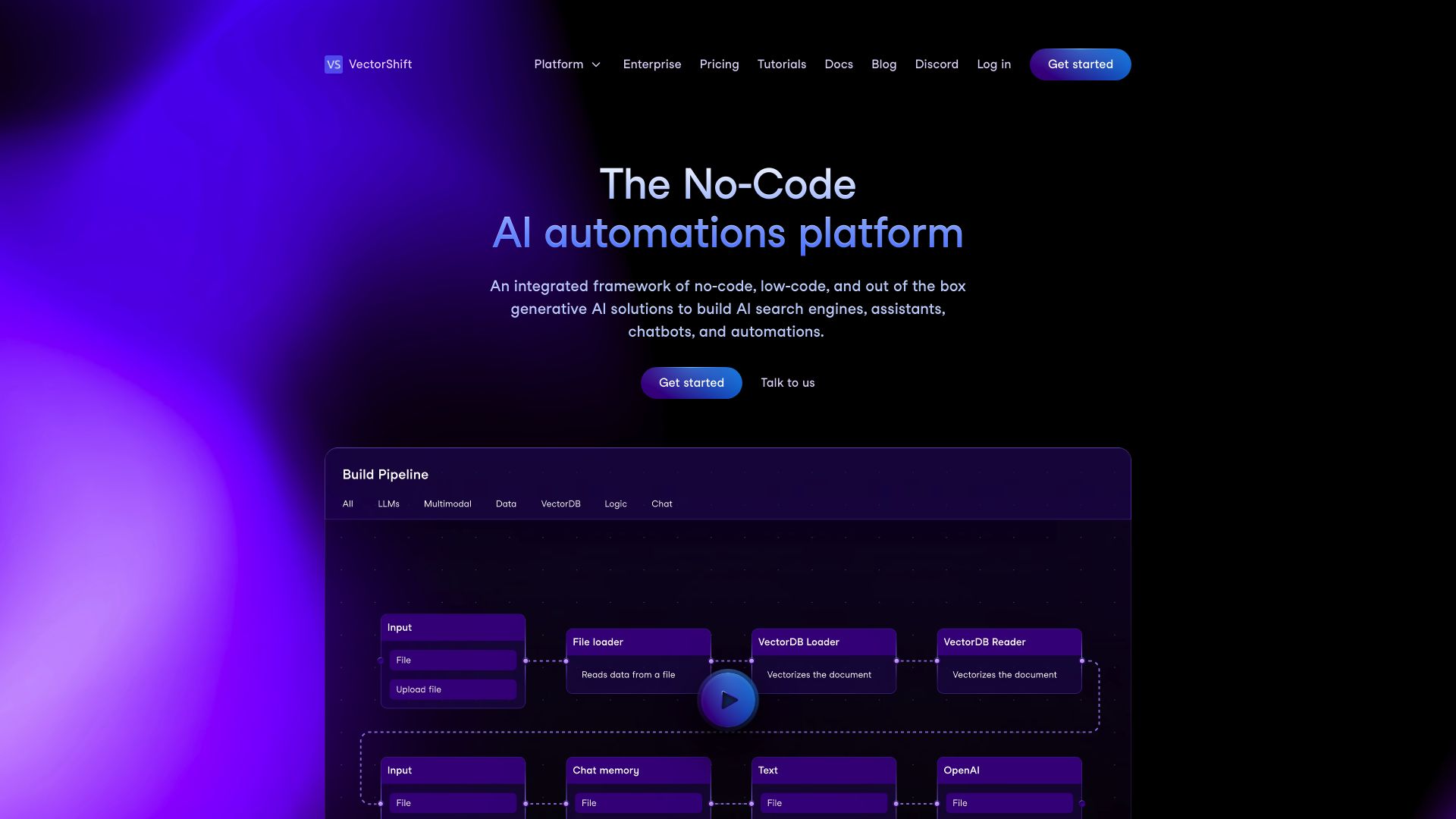Respell vs. VectorShift: Comparing AI Workflow Automation Tools
AI workflow automation revolutionizes business processes, empowering organizations to harness the full potential of artificial intelligence. This comparison explores Respell vs. VectorShift, two leading platforms in the AI orchestration space. We’ll examine their unique approaches to workflow creation, integration capabilities, and user-friendly features.
By dissecting their strengths and limitations, we aim to guide you towards the most suitable solution for your AI automation needs. As we delve into the specifics, we’ll also introduce SmythOS, a powerful alternative that combines intuitive design with advanced functionality. Whether you’re a developer seeking robust APIs or a business user looking for no-code solutions, this analysis will equip you with the knowledge to make an informed decision in the rapidly evolving world of AI workflow automation.
Respell Overview
Respell revolutionizes AI workflow creation with its no-code platform. Users craft AI-driven processes, called spells, through an intuitive drag-and-drop interface. The platform’s centerpiece, Elle, functions as an AI assistant, guiding users in building spells, conducting research, and managing tasks using natural language.
Respell revolutionizes AI workflow creation with its no-code platform. Users craft AI-driven processes, called spells, through an intuitive drag-and-drop interface.


The Respell Spell Studio empowers users to construct complex AI workflows without coding expertise. It offers pre-built templates for various use cases, streamlining the creation process. Respell’s strength lies in its extensive integrations, supporting popular platforms like Airtable, Salesforce, and Zapier, enabling seamless data management across services.
Respell’s strength lies in its extensive integrations, supporting popular platforms… enabling seamless data management across services.
Responding to the need for AI accessibility, Respell caters to both technical and non-technical users. Its visual interface simplifies AI agent creation, while advanced features satisfy developers’ requirements. The platform supports multimodal AI, incorporating text, image, and speech models for diverse applications.
Respell’s collaborative features facilitate team-based AI development. However, it lacks certain advanced capabilities like hosted vector databases or specialized crawlers for web content. Despite these limitations, Respell’s user-friendly approach and robust integration options position it as a versatile tool for businesses seeking to harness AI’s potential without extensive technical overhead.
VectorShift Overview
VectorShift empowers users to design, build, and manage AI-driven workflows and automations through an accessible platform. The software caters to both technical and non-technical users with its dual interface approach, offering a no-code builder and a code SDK.
The platform’s versatility shines through its support for diverse applications, including chatbots, search functionalities, and content creation. VectorShift’s comprehensive automation capabilities allow users to build end-to-end workflows, schedule tasks, and trigger actions based on predefined events. This flexibility enables businesses to centralize and streamline various AI-powered processes within a single ecosystem.
VectorShift empowers users to design, build, and manage AI-driven workflows and automations through an accessible platform… offering a no-code builder and a code SDK.
VectorShift stands out with its extensive integration options, connecting seamlessly with popular data sources like Google Drive, Slack, and Airtable. This interoperability facilitates centralized data management and real-time syncing across applications. The platform’s pipeline dashboard serves as its core feature, enabling users to craft AI workflows from scratch or utilize pre-built templates for efficient deployment.


VectorShift’s knowledge base functionality enhances AI performance by centralizing data and enabling semantic searches, improving the accuracy and relevance of information retrieval. The platform offers flexible deployment options, allowing users to implement their AI solutions as chatbots, automations, or search functions. These can be customized and exported in various formats, including URLs, iFrames, WhatsApp/SMS bots, API endpoints, and Slack App bots.
VectorShift’s knowledge base functionality enhances AI performance by centralizing data and enabling semantic searches, improving the accuracy and relevance of information retrieval.
While VectorShift provides a robust set of features, it’s worth noting that some advanced capabilities like IP control, hosted vector databases, and specific crawlers for sitemaps or YouTube transcripts are not explicitly mentioned in the platform’s offerings. Users requiring these specialized features may need to explore additional tools or integrations to supplement VectorShift’s core functionalities.
Feature Comparison
Respell and VectorShift offer distinct approaches to AI agent development, each with its own strengths and limitations. Respell’s Spell Studio provides a user-friendly visual builder for creating AI workflows without coding, while VectorShift offers both a no-code builder and a code SDK for more technical users. This dual approach gives VectorShift an edge in flexibility, catering to a broader range of users.
In terms of core components, both platforms support hosted agents and multiple environments. However, VectorShift’s pipeline dashboard stands out as a central feature for crafting AI workflows from scratch or using pre-built templates. Respell’s Elle AI Assistant offers natural language interactions for building spells and conducting research, a feature not explicitly mentioned in VectorShift’s offerings.
Regarding security, both platforms implement data encryption and OAuth authentication. However, neither Respell nor VectorShift explicitly mention IP control features, which may be a concern for organizations with strict access control requirements. SmythOS addresses this gap by offering comprehensive security features, including IP control, ensuring a more robust security posture for enterprise-level deployments.
Feature Comparison Table
| Respell | VectorShift | SmythOS | |
|---|---|---|---|
| CORE FEATURES | |||
| Hosted Agents (Dev, Production) | ✅ | ❌ | ✅ |
| Environments (Dev, Production) | ✅ | ❌ | ✅ |
| Autonomous Agents | ✅ | ❌ | ✅ |
| Explainability & Transparency | ✅ | ❌ | ✅ |
| Debug Tools | ✅ | ❌ | ✅ |
| Multi-Agent Collaboration | ✅ | ❌ | ✅ |
| Audit Logs for Analytics | ✅ | ❌ | ✅ |
| SECURITY | |||
| Constrained Alignment | ❌ | ❌ | ✅ |
| Data Encryption | ✅ | ❌ | ✅ |
| IP Control | ❌ | ❌ | ✅ |
| COMPONENTS | |||
| Huggingface AIs | ❌ | ❌ | ✅ |
| Zapier APIs | ✅ | ❌ | ✅ |
| Classifiers | ✅ | ❌ | ✅ |
| Data Lakes | ❌ | ❌ | ✅ |
| DEPLOYMENT OPTIONS (EMBODIMENTS) | |||
| Staging Domains | ❌ | ❌ | ✅ |
| Production Domains | ❌ | ❌ | ✅ |
| Deploy as GPT | ❌ | ❌ | ✅ |
| DATA LAKE SUPPORT | |||
| Hosted Vector Database | ❌ | ✅ | ✅ |
| Sitemap Crawler | ❌ | ❌ | ✅ |
| YouTube Transcript Crawler | ❌ | ✅ | ✅ |
Best Alternative to Respell and VectorShift
SmythOS emerges as the superior choice for AI agent development, offering unparalleled versatility and power. Our platform combines intuitive design with advanced capabilities, making it accessible to users of all skill levels. SmythOS’s drag-and-drop interface simplifies complex AI workflow creation without sacrificing functionality. We support a vast array of AI models from leading providers, enabling users to leverage cutting-edge technologies effortlessly.
SmythOS emerges as the superior choice for AI agent development, offering unparalleled versatility and power.
Unlike Respell and VectorShift, SmythOS provides comprehensive security features, including IP control, ensuring enterprise-grade protection for sensitive data and operations. Our platform excels in scalability, supporting everything from small projects to large-scale enterprise deployments. We offer extensive integration options, connecting seamlessly with popular services and APIs to enhance existing workflows.
SmythOS stands out with its multi-agent collaboration capabilities, allowing for sophisticated, team-like interactions between AI agents. This feature dramatically expands the scope and complexity of tasks that can be automated. Additionally, our platform provides robust debugging and monitoring tools, ensuring transparency and easy troubleshooting throughout the development process.
SmythOS stands out with its multi-agent collaboration capabilities, allowing for sophisticated, team-like interactions between AI agents.
With SmythOS, users gain access to a wide range of deployment options, including APIs, webhooks, chatbots, and scheduled agents. This flexibility allows for seamless integration into diverse environments and use cases. Our hosted vector database and support for various data formats, including PDFs and web crawling, provide a comprehensive solution for managing and utilizing large datasets efficiently.
By choosing SmythOS, users unlock unlimited possibilities for AI automation and innovation. Our platform’s combination of ease of use, advanced features, and enterprise-level capabilities makes it the ideal choice for businesses and developers looking to harness the full potential of AI technology.
Conclusion
Respell and VectorShift offer compelling solutions for AI workflow creation, each with unique strengths. Respell’s intuitive Spell Studio and Elle AI assistant simplify the process for non-technical users, while VectorShift’s dual-interface approach caters to a broader audience. Both platforms provide robust integration options and support for multiple environments, enhancing their versatility.
However, SmythOS emerges as the superior choice, offering unparalleled flexibility and power. Our platform combines the best of both worlds – an intuitive visual builder for ease of use and advanced features for technical users. SmythOS stands out with its extensive integration ecosystem, supporting over 300,000 integrations and a wide range of AI models.
Unlike Respell and VectorShift, SmythOS provides comprehensive security features, including IP control, ensuring enterprise-grade protection. Our platform’s ’Create Once, Deploy Anywhere’ approach allows for seamless deployment across various platforms, from chatbots to APIs, offering unmatched versatility. With features like hosted vector databases, multi-agent collaboration, and advanced problem-solving capabilities, SmythOS equips users with a complete toolkit for AI-driven innovation.
To experience the full potential of AI workflow automation, explore our diverse range of AI-powered agent templates and create a free SmythOS account. Transform your business processes and unlock new possibilities with SmythOS – the future of AI orchestration.
Last updated:
Disclaimer: The information presented in this article is for general informational purposes only and is provided as is. While we strive to keep the content up-to-date and accurate, we make no representations or warranties of any kind, express or implied, about the completeness, accuracy, reliability, suitability, or availability of the information contained in this article.
Any reliance you place on such information is strictly at your own risk. We reserve the right to make additions, deletions, or modifications to the contents of this article at any time without prior notice.
In no event will we be liable for any loss or damage including without limitation, indirect or consequential loss or damage, or any loss or damage whatsoever arising from loss of data, profits, or any other loss not specified herein arising out of, or in connection with, the use of this article.
Despite our best efforts, this article may contain oversights, errors, or omissions. If you notice any inaccuracies or have concerns about the content, please report them through our content feedback form. Your input helps us maintain the quality and reliability of our information.
